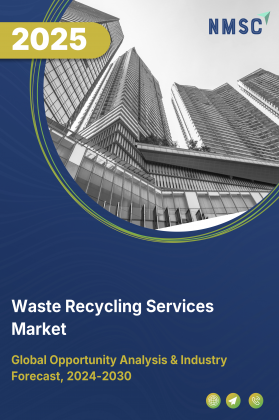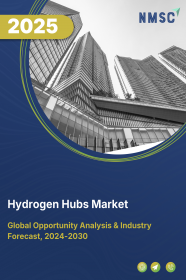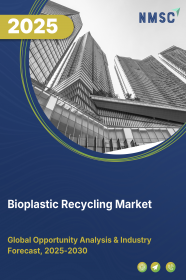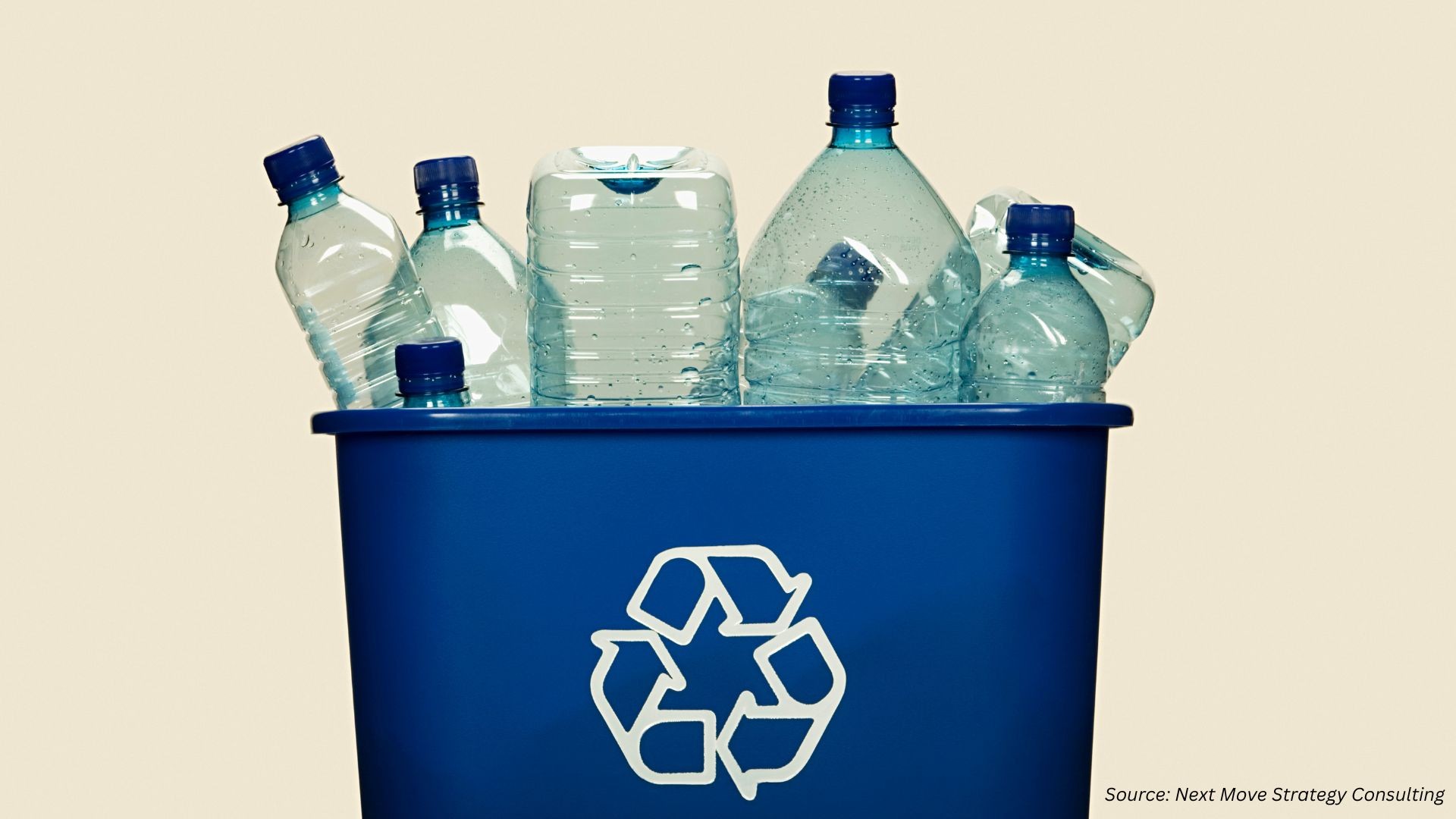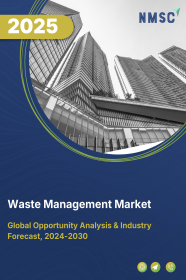
Waste Management Market by Waste Type(Hazardous Waste, and Non-Hazardous Waste), by Service(Collection, and Disposal), by Source(Residential or Municipal Waste, Commercial Waste, and Industrial Waste) – Global Opportunity Analysis and Industry Forecast, 2024–2030
Industry: Energy & Power | Publish Date: 10-Oct-2025 | No of Pages: 230 | No. of Tables: 390 | No. of Figures: 315 | Format: PDF | Report Code : EP2787
Industry Overview
The global Waste Management Market size was valued USD 687.30 billion in 2023, and it is projected to reach USD 1218.52 billion by 2030, with a CAGR of 7.5% from 2024-2030.
The waste management market involves a wide range of services and activities aimed at managing and mitigating the impact of waste generated by various sectors including residential, commercial, and industrial. It includes the collection, transportation, processing, recycling, and disposal of waste materials in a manner that is environmentally responsible and sustainable. The market also involves the development and implementation of technologies and practices that promote waste reduction, resource recovery, and the safe handling of hazardous materials.
The key components of the market include waste collection services, recycling facilities, waste-to-energy plants, landfill operations, and environmental consulting services. As awareness of environmental issues grows, the market continues to expand, driven by growing population, technological advancements, and increasing public demand for sustainable waste solutions.
Growing Population Necessitates the Need for Effective Waste Management Solutions
The rising population increases the need for effective waste management market report solutions. As the population surge the amount of waste generation, it necessitates the demand for efficient and scalable waste management solutions to ensure environmental sustainability and public health. As per the latest survey conducted by the United Nations (UN), the global human population accounted 8 billion in the month of November in 2022, and it is projected to reach around 10 billion by 2042, representing a growth of 20.0% in the span of 30 years. This projected growth is intensifying the need for robust waste management solutions to maintain environmental health and sustainability around the world.
Moreover, the increasing population directly leads to a rise in residential waste generation. According to the United Nations Environment Programme (UNEP) latest report, municipal solid waste generation accounted for 2.1 billion tonnes in 2023 and it is projected to reach 3.8 billion tonnes by 2050. Furthermore, the global direct cost of waste management estimated around USD 361 billion in 2023 and it is expected to double to staggering USD 640.3 billion by 2050, that is equivalent to around 43.6%. This high percentage of residential waste generation is driving the growth of the market to maintain cleanliness and quality of life across the globe.
Rapidly Growing Industrial Sectors Fuels the Demand for Waste Management Solutions
The rapidly growing industrial sector further leads to higher levels of waste generation. As industrial activities expand, the volume of waste produced increases accordingly that highlights the importance of implementing effective waste management solutions to mitigate environmental impact.
According to the United Nations Environment Programme (UNEP) report 2022, the global manufacturing production is increased by 9.4% in 2021 as compared to 4.2% in 2020. Moreover, as per the International Energy Agency (IEA), the global demand for oil is projected to rise by 6% between 2022 and 2028 to reach 105.7 million barrels per day. This increase in global manufacturing and oil demand highlights the urgent need for advanced waste management solutions to handle rising industrial and hazardous waste, promote recycling, and minimize environmental impact.
Moreover, the industrial sector's contribution to plastic waste generation highlights the critical need for enhanced waste management strategies. According to the Organization for Economic Cooperation and Development (OECD) report 2022, global plastic waste generation by packaging industry accounted for 142.6 million tonnes, followed by building and construction industry 76.89 million tonnes, transportation industry 62.17 million tonnes, consumer and institutional products industry 46.66 million tonnes, textile sector 43.88 million tonnes, electronics industry 17.31 million tonnes, and other industries accounted for 66.32 million tonnes.
As industrial activities expanded in various sectors such as manufacturing and construction, the volume of waste produced also surged. This highlights the critical need for enhanced waste management strategies to manage the growing environmental impact associated with industrial growth.
Rising Environmental Concerns and the Economic Costs Propels the Growth of the Market
The growing environmental concerns among the population are promoting sustainable waste management practices. The negative impact of improper waste disposal on ecosystems and public health is driving the demand for environmentally friendly waste management solutions, including composting and recycling. Consequently, companies are taking different initiatives, including product launches to mitigate these issues.
For instance, in February 2024, ZenRobotics introduced ZenRobotics 4.0 its fourth generation of waste sorting robots with new features and upgraded artificial intelligence (AI) to optimize and improve the efficiency of material sorting operations. Moreover, in March 2023, Bharat Petroleum Corporation Ltd. (BPCL), launched E-Waste management initiative to further strengthen sustainable development goals and to reduce and recycle the e-waste.
Furthermore, the rising generation of food waste further necessitates the demand for effective waste control solutions due to its significant environmental impact. As food waste accumulates, it contributes to increased greenhouse gas emissions and environmental pollution. According to the UNEP latest report, households across all continents wasted over 1 billion meals a day in 2022 and there were 1.05 billion tonnes of food waste generated amounting to 132 kilograms per capita. Out of the total food wasted in 2022, 60% generated from the household level, with food services responsible for 28% and retail 12%.
Additionally, the latest report from the World Food Programme (WFP) stated that, the total cost of food loss and waste for the global economy is estimated around USD 1 trillion. The significant levels of food waste are propelling growth in the market by necessitating the demand for effective management of food waste such as anaerobic digestion and waste-to-energy systems.
The Infrastructural Limitations and Stringent Government Regulations Hinders the Growth of the Market
The growth of the market is hindered by infrastructural limitations and stringent government regulations. Insufficient infrastructure for waste management and processing creates inefficiencies and operational delays that impedes effective waste control and recycling efforts. Additionally, rigorous regulatory requirements imposed by governmental bodies such as the Environmental Protection Agency (EPA) in the U.S., the Union Ministry of Environment, Forest and Climate Change (MoEF&CC) in India, the Ministry of Ecology and Environment in China, and the Federal Environment Agency (FEA) in Germany, and other bodies increases compliance costs and operational challenges for businesses. These factors collectively constrain market expansion and innovation that affects the overall development of the industry.
The Adoption of Waste-To-Energy Technologies Creates Future Growth Opportunities in the Market
The adoption of waste-to-energy technologies such as incineration, anaerobic digestion, and gasification presents a significant growth opportunity for the market as these technologies convert waste materials into usable energy, reducing landfill dependency and contributing to sustainable energy generation. By transforming waste into a valuable resource, waste-to-energy solutions promote environmental sustainability and drive market expansion. This innovative approach aligns with waste management market trends toward circular economy practices and offers economic benefits by generating energy from waste that creates a promising avenue for growth of the waste management sector.
By Waste Type, Municipal solid waste (MSW) or Household Holds Dominant Share in the Waste Management Market
Municipal solid waste (MSW), or household waste, holds the dominating share and exhibits the highest CAGR of waste type as it includes a significant portion of waste generated daily. This segment’s growth is driven by increasing urbanization, rising population, and growing consumerism. Effective management practices, including advanced sorting, recycling, and waste-to-energy technologies, are crucial for addressing the expanding volume of household waste. By focusing on reducing landfill dependency and enhancing resource recovery, the MSW sector aims to improve sustainability and minimize environmental impact.
By Waste Treatment, Open Dump Holds Dominant Share in the Waste Management Market
Open dump holds the dominating the waste management market share methods as it involves the disposal of waste without any engineered controls or protective measures. This method is characterized by the direct dumping of waste onto the ground that leads to significant environmental and health hazards. Open dumps cause soil and water pollution, attract pests, and emit harmful gases, contributing to air pollution. Despite these negative impacts, open dumps remain prevalent in many regions due to their low cost and lack of regulatory enforcement, posing ongoing challenges for waste management and environmental protection.
Asia-Pacific Holds the Dominant Share and Expected to Show Steady Growth in the Waste Management Industry
Government initiatives significantly drive the growth of the waste management market in the Asia-Pacific region. Various countries are implementing policies and regulations to tackle waste management challenges and promote sustainable practices. These initiatives include stricter waste disposal regulations, financial incentives for recycling programs, and investments in advanced waste management technologies.
As per the latest report published by the World Bank Group, China introduced the Plastic Waste Reduction Project (Shaanxi) and invested USD 250 million to reduce plastic pollution from municipal solid waste and improve provincial plastic waste management. As governments across the region enhance their focus on improving waste management systems, these efforts are fostering waste management market growth and supporting the development of more efficient and environmentally friendly waste management solutions.
Furthermore, the increase in waste generation propels the growth of the market in the Asia-Pacific region. Rapid urbanization, population growth, and economic development are contributing to higher volumes of waste production across the region.
According to the latest report published by the Energy and Resources Institute (TERI), India generates over 62 million tons (MT) of waste in a year. This rising waste generation necessitates more advanced and efficient waste management solutions to handle the increasing waste management market demand for waste collection, processing, and disposal. As a result, the market is expanding to address these challenges, driving the adoption of innovative waste management technologies and practices.
Competitive Landscape
The waste management industry comprises various key players such as ALBA Group, Biffa Group, Casella Waste Systems, Inc., Clean Earth, Clean Harbors, Inc, Cleanaway Waste Management Limited, DAISEKI CO.,Ltd., FCC Environment Limited, GFL Environmental Inc., Heritage-Crystal Clean, Inc., Montrose Environmental Group, Inc., Recology Inc., Remondis AG & Co. Kg, Republic Services, Inc., Reworld Waste, LLC, Stericycle, Inc., URBASER, S.A., Veolia Environment S.A, Waste Connections, Inc., Waste Management Inc and others.
|
DATE |
COMPANY |
RECENT DEVELOPMENTS |
|
Jun-24 |
Waste Management Inc. |
Waste Management Inc. acquired Stericycle a medical waste services company to enhance its position in the healthcare market and expand its suite of environmental solutions. |
|
Mar-24 |
Clean Harbors |
Clean Harbor acquired HEPACO to enhance its environmental services and emergency response capabilities. |
|
Feb-24 |
Veolia Environnment S.A. |
Veolia launched 2024-2027 strategic program named GreenUp that focuses on the deployment of sustainable solutions that address pollution, decarbonization, and resource regeneration. |
|
Feb-24 |
Waste Connections Inc |
Waste Connections Inc. acquired Waste-Away Group to enhance Waste Connections' operational footprint in Indiana and bolster its service capabilities in the waste management sector. |
Waste Management Market Key Segment
By Waste Type
-
Hazardous Waste
-
Solid Waste
-
Liquid Waste
-
Gaseous Waste
-
-
Non-Hazardous Waste
-
Food
-
Paper and Cardboard
-
Plastic
-
Glass
-
Metal
-
Water
-
E-Waste
-
Others
-
By Service
-
Collection
-
Collection and Transportation
-
Storage and Handling
-
Sorting
-
-
Disposal
-
Open Dumping
-
Incineration/Combustion
-
Landfills
-
Recycling
-
Composting and Anaerobic Digestion
-
By Source
-
Residential or Municipal Waste
-
Commercial Waste
-
Offices and Retail Stores
-
Hospitals
-
Restaurants
-
Other Commercial Sources
-
-
Industrial Waste
-
Manufacturing Waste
-
Construction, Renovation, and Demolition Waste
-
Agriculture Waste
-
Medical Waste
-
Other Industrial Sources
-
By Region
-
North America
-
The U.S.
-
Canada
-
Mexico
-
-
Europe
-
The UK
-
Germany
-
France
-
Italy
-
Spain
-
Denmark
-
Netherlands
-
Finland
-
Sweden
-
Norway
-
Russia
-
Rest of Europe
-
-
Asia-Pacific
-
China
-
Japan
-
India
-
South Korea
-
Australia
-
Indonesia
-
Singapore
-
Taiwan
-
Thailand
-
Rest of Asia-Pacific
-
-
RoW
-
Latin America
-
Middle East
-
Africa
-
Key Players
-
ALBA Group
-
Biffa Group
-
Casella Waste Systems, Inc.
-
Clean Earth
-
Clean Harbors, Inc
-
Cleanaway Waste Management Limited
-
DAISEKI CO.,Ltd.
-
FCC Environment Limited
-
GFL Environmental Inc.
-
Heritage-Crystal Clean, Inc.
-
Montrose Environmental Group, Inc.
-
Recology Inc.
-
Remondis AG & Co. Kg
-
Republic Services, Inc.
-
Reworld Waste, LLC
-
Stericycle, Inc.
-
URBASER, S.A.
-
Veolia Environment S.A
-
Waste Connections, Inc.
-
Waste Management Inc
Report Scope And Segmentation
|
Parameters |
Details |
|
Market Size in 2023 |
USD 687.30 Billion |
|
Revenue Forecast in 2030 |
USD 1218.52 Billion |
|
Growth Rate |
CAGR of 7.5% from 2024 to 2030 |
|
Analysis Period |
2023–2030 |
|
Base Year Considered |
2023 |
|
Forecast Period |
2024–2030 |
|
Market Size Estimation |
Billion (USD) |
|
Growth Factors |
|
|
Companies Profiled |
10 |
|
Market Share |
Available for 10 companies |
|
Customization Scope |
Free customization (equivalent up to 80 working hours of analysts) after purchase. Addition or alteration to country, regional, and segment scope. |
|
Pricing and Purchase Options |
Avail customized purchase options to meet your exact research needs. |



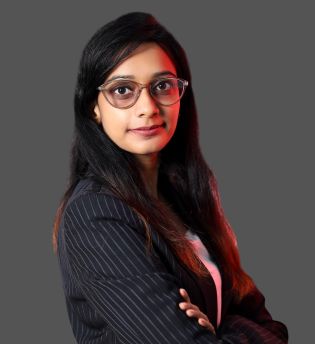
















 Speak to Our Analyst
Speak to Our Analyst



